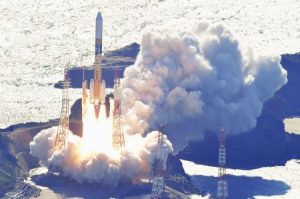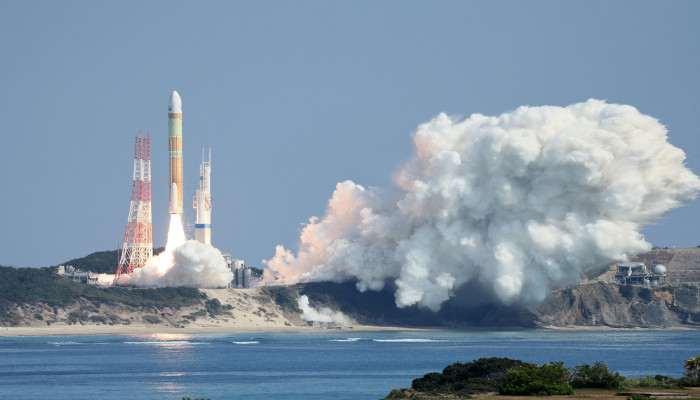©2021 Reporters Post24. All Rights Reserved.
Japan on Thursday (September 7) launched a rocket carrying what it plans to be the country’s first successful Moon lander, as was seen in the live footage shared by the country’s space agency. The H2-A rocket, carrying the precision “Moon Sniper” lander blasted off at 8:42 am (2342 GMT Wednesday) and is expected to touch down on the lunar surface in a span of four to six months.

The rocket was launched from Tanegashima in southern Japan after getting postponed three times due to bad weather and garnered around 35,000 online viewers.
The rocket is also carrying a research satellite which has been developed by NASA, the European Space Agency and the Japan Aerospace Exploration Agency (JAXA).
The moon lander was launched by Japan just a month after India’s craft landed near the south pole of the Moon, which was seen as a historic triumph for the country.
The compact lander of Japan, officially called the Smart Lander for Investigating Moon (SLIM), has been designed to successfully land within 100 metres of the specific target on the Moon’s surface.
“By creating the SLIM lander humans will make a qualitative shift towards being able to land where we want and not just where it is easy to land,” said JAXA, before the launch.
“By achieving this, it will become possible to land on planets even more resource-scarce than the Moon. Globally there are no previous instances of pinpoint landing on celestial bodies with significant gravity such as the Moon,” it added.
Till now, India, the United States, Russia and China have been able to place their spacecraft on the surface of the Moon and India became the first country to do so on the south pole. All the previous attempts by Japan have failed, including a lunar probe named Omotenashi sent by it last year as part of the Artemis programme of the United States.
Omotenashi, which was the size of a backpack, would have been the smallest Moon lander in the world. However, after the probe was launched by the powerful rocket of NASA from the Kennedy Space Center in Florida, the mission faced issues and finally they lost communication with it.
Japan also faced problems with launch rockets, after the next-generation H3 model failed after liftoff in March and reliable solid-fuel Epsilon was unsuccessful last October.


